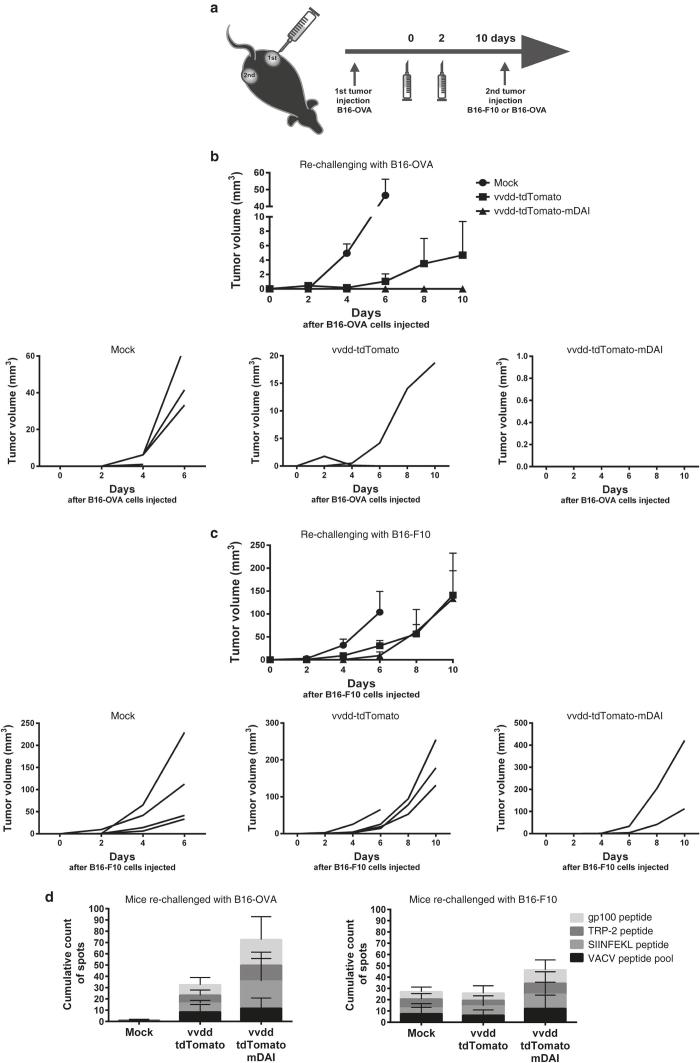Figure 4.
DAI-virus boosts tumor-specific immunity without boosting anti-viral immunity in mice bearing syngeneic melanoma tumors. (a) Schematic of the experiment; B16-OVA melanoma tumors were established by injecting 1 × 105 B16-OVA cells subcutaneously into other flank of C57BL/6J mice (N = 12 per group). Established tumors (one tumor per mouse, ~4 × 4 mm in diameter) were injected intratumorally with viruses in volume of 50 μl on day 0 with 3 × 106 pfu/tumor and on day 2 with 1 × 106 pfu/tumor. Mock tumors were injected with phosphate-buffered saline only. The mice were re-challenged with another tumor of the same background: the mice received either B16-OVA cells or B16-F10 cells 3 × 105 cells/tumor, 10 days after the first virus treatment. The second tumor was not treated, only tumor growth was followed. (b) Four mice per group were rechallenged with the same tumor cell line (B16-OVA) and (c) four mice per group were rechallenged with a cell line with the same origin but which does not express ovalbumin (B16-F10). The mean tumor growth (above) and the growth of individual tumors (below) are presented after the second tumor implantation (day 0 = day when second tumor was injected). IFN-γ producing T-cells were assessed from spleens 22 days after virus treatments by ELISpot. Splenocytes were cultured with tumor-associated or virus-associated peptides for 36 hours and spots were counted. (d) Cumulative spot counts of the ELISpot wells of B16-OVA rechallenged mice (left) and B16-F10 rechallenged mice (right).

